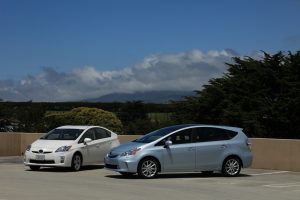 So far, electric car have yet to catch on in the United States. Fewer than 1 percent of the households in the country own such a vehicle. Yet over 40 percent of the families in America could benefit from an electric or hybrid car. Most people driver fewer than sixty miles a day, which is well within the range of most electric vehicles. Furthermore, almost 80 percent of drivers never haul a boat or other cargo. And, over 90 percent of trips have four passengers or fewer.
So far, electric car have yet to catch on in the United States. Fewer than 1 percent of the households in the country own such a vehicle. Yet over 40 percent of the families in America could benefit from an electric or hybrid car. Most people driver fewer than sixty miles a day, which is well within the range of most electric vehicles. Furthermore, almost 80 percent of drivers never haul a boat or other cargo. And, over 90 percent of trips have four passengers or fewer.
Tesla’s success, and the market for electric vehicles, clearly shows that there is a place for electric car start-ups both in the United States and abroad. So, consumers will probably have significantly more choices in the coming years.
How do you know what type of alternative fuel vehicle is best for you and your family? The best way to approach this problem may be to take a close look at the different kinds of alternative fuel vehicles.
Hydrogen Fuel Cell
Many start-ups may focus on these vehicles. They do not run on gas or electricity. Instead of an electric or combustion powertrain engine, these cars oxidize hydrogen. That process creates an electric charge which powers an internal battery. That battery powers the vehicle.
HFC technology has actually been around since the 1980s. But primarily due to cost and size, there are very, very few HFC vehicles currently available in the United States. However, advances in both manufacturing techniques and HFC technology may change that. Honda, Hyundai, and Toyota all included hydrogen fuel cell vehicles in their 2018 lineups.
HFC vehicles are zero emission vehicles. They are also completely silent and never require battery charges. However, HFC vehicles still have issue with the size of the hydrogen tank. Furthermore, the price of this fuel varies wildly. Hydrogen is sometimes higher than gasoline. Finally, finding a hydrogen refueling point outside places like Los Angeles and San Francisco is sometimes challenging.
Battery Electric Vehicles
All Teslas are BEVs. The battery-powered engine only has one rotor, so these vehicles are quite simple. However, there are still quite a few moving parts, as BEV vehicles usually have lots of very sophisticated computer software. Overall, however, BEVs represent one of the fastest-growing segments of this market.
These vehicles are easy to drive, create no emissions, and are almost completely silent. On the down side, charging takes a while, range is not the best, and charging stations are still limited.
Hybrids
Contrary to popular myth, not all hybrid vehicles are created equally. Here are the three major categories:
- Parallel Hybrid: When most people think of “hybrids,” they are really thinking about series hybrid or power split vehicles. A smaller-than-normal gasoline-powered internal combustion engine powers the car at high speeds and during other such period; a battery-powered engine runs the car at all other times.
- Mild Hybrid: Basically, an ICE powers these vehicles except when they are coasting. Transition between ICE and battery is usually seamless. Plus, the battery may run some systems, such as the air conditioner.
- Plug-in Hybrid: In the other two types of hybrids, the electric engine supplements the ICE. With a plug-in, the opposite is true. These hybrids run mostly on electricity and use the ICE to extend range and otherwise supplement operation.
As a rule, hybrid vehicles are usually cheaper and more flexible than BEVs and HFCs.
Hopefully, this post gave you some good information about the different types of electric vehicles. So, when you go to a dealer, you will be a more informed consumer.










